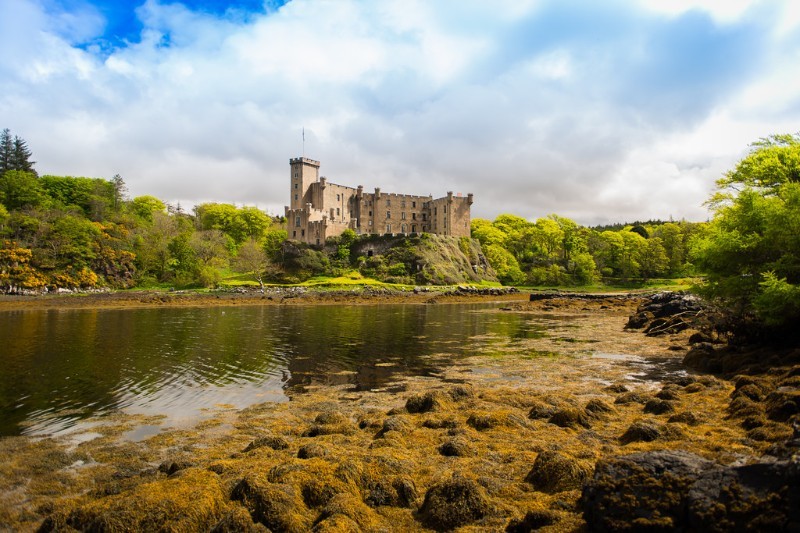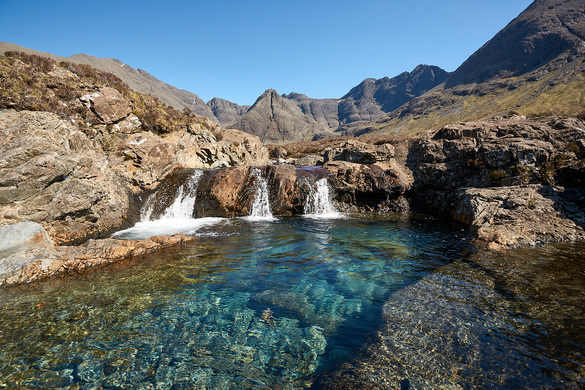So we hope that many of you have read the Outlander issue by now (though it’s still on its way to some subscribers, especially international ones, so don’t worry if you haven’t received yours yet; you can also write to info@faeriemag.com so we can make sure it’s on its way!). And we hope that you love it as much as we do, in its celebration of Outlander and Scotland and all things beautiful, tartan, thistle-laden and faerie-esque! We’ve been thrilled at the response so far, like in this tweet from @karlenab59:
@Faeriemagazine I just recieved my #44 The Outlander Issue. BRAVO. This issue is STUNNING AMAZING, POWERFUL. A DELICIOUS treat for anyone. A CORNUCOPIA full of PLEASURE for the OUTLANDER fan. THANK YOU!
— karlene billings (@karlenab59) October 5, 2018
Of course, you are welcome to share your thoughts (and eternal love) as well by emailing is directly at info@faeriemag.com!
You might have noticed a gorgeous image of the Callanish standing stones in the issue and mention of Ishga Organic Skincare USA, a family-owned beauty brand headquartered right down the road from them, in Scotland’s Outer Hebrides. Imagine having these beauties just down the road!!
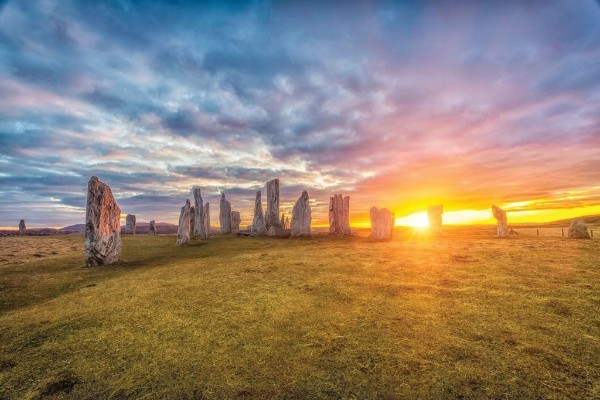
Ishga was recommended by our beauty/wellness expert Rona Berg (who interviewed Diana Gabaldon and wrote about 18th century Scottish herbs for the issue as well) and its products are packed with magical, naturally harvested seaweed and spring water from an old family well, said to be loved by fairies…. (Rona is also a seaweed expert, as you might remember from The Mermaid Handbook…)
Since we love all things Scotland and beauty and standing stone related, and since we love staying as glamorous and fairy-touched as possible, we asked Ishga’s Stewart Hill a few penetrating questions. We also asked him to share some additional swoony photos!
(PLUS Faerie readers will receive free Organic Seaweed Body Wash or Lip Balm with any purchase—just visit https://ishgaorganicskincare.com/ and ask in the comments when checking out!)
Faerie Magazine:I understand that Ishga is a family business that uses the natural resources of the Scottish islands. Can you tell us about that? How/why did it start?
Stewart Hill: Ishga was founded by the owners of the Hebridean Seaweed Company, which has the only commercial licence to harvest seaweed in that part of the country. Primarily this was for natural fertiliser, and animal feed. When fed to horses, it leads to an incredible improvement in their hooves and coat. Soon, they were exporting to Arab camel owners in the Middle East who reported the same results. They already knew if would elicit similar positive results with people. We are committed to our sustainable, organic, all-natural and cruelty-free process.
FM:Is your family from the Hebrides? What is life like there? How would you describe it?
SH: Yes, my grandmother is from the Isle of Harris, my grandfather the Isle of Skye, and my mum lives in Stornoway on the Isle of Lewis—where Ishga is made. The Hebrides are a long chain of islands stretching down Scotland’s west coast, with a landscape ranging from Caribbean-looking beaches to brooding mountains. Since the Highland Clearances (forced evictions) of the 18th & 19th centuries, this area has been the main bastion of the Gaelic (pronounced ‘Gahlig’, rather than ‘Gaylick’) language and culture in Scotland. It has an aesthetic that is difficult to describe, and quite different from other parts of Scotland; beautiful and almost lunar in places, plus castles and Neolithic structures. The people are very friendly and welcoming, and the cuisine is based on the land and sea around it.

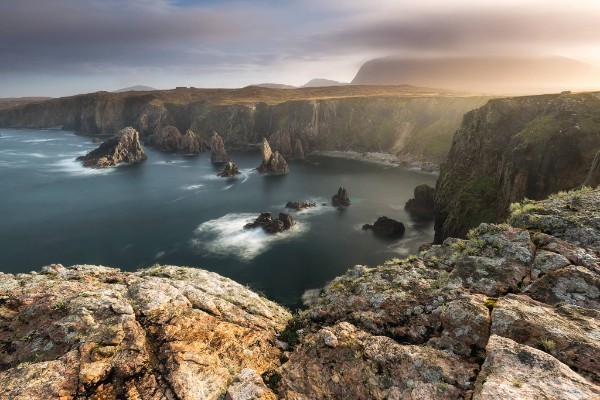
FM: What are some of your favorite stories about the business?
SH: It’s actually quite funny. One of the founder’s wife is a beautician and she was literally mixing the leftover seaweed bits into her products with a wooden spoon at the kitchen sink, because her clients loved the results so much. She asked him: “You’re the expert, can’t you find a better way to get this into my skin products?” And so they did. Most other seaweed products out there use an extract they buy elsewhere and the active ingredient is only 1% or 2%. Because of Ishga’s process, we can keep much more in without the strong iodine smell—up to 30%. We only produce products based on our own seaweed.
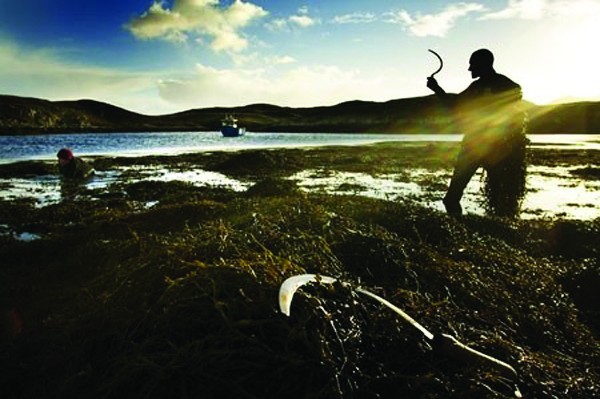 FM: Is there a long history of Scots using seaweed, etc., in beauty treatments?
FM: Is there a long history of Scots using seaweed, etc., in beauty treatments?
SH: Well for beauty it is very new—originally it was medicinal. In traditional Celtic treatments seaweed was always known to have beneficial properties for the skin, both topically and ingested. Even as recently as the Second World War they were wrapping burned soldiers in seaweed to help minimise scarring, and regenerate the skin.
FM: How is the seaweed harvested?
SH: Hebridean Seaweed Company has a machine that resembles a hybrid of a wee combine harvester and one of those paddle boats you rent on a Florida beach! However, that’s more for deeper water kelp—the seaweed for Isgha is a more delicate, closer to the shore variety, and it’s generally harvested by hand with a little scythe-like tool. They have to be careful with the tide!
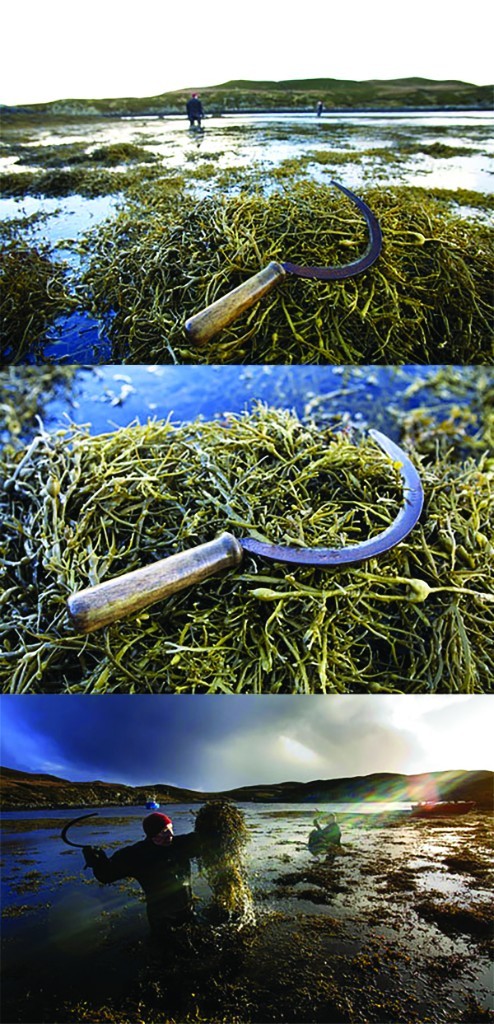
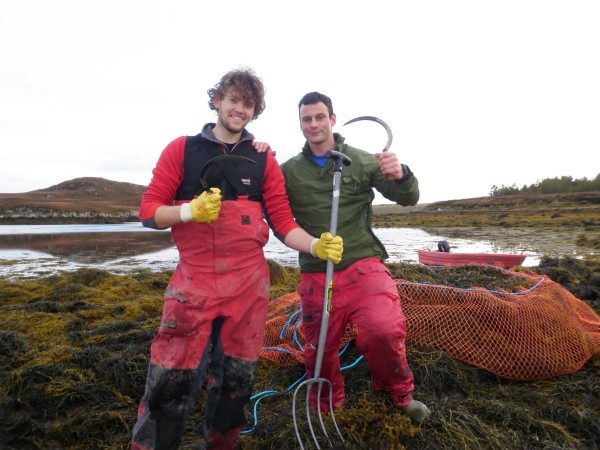
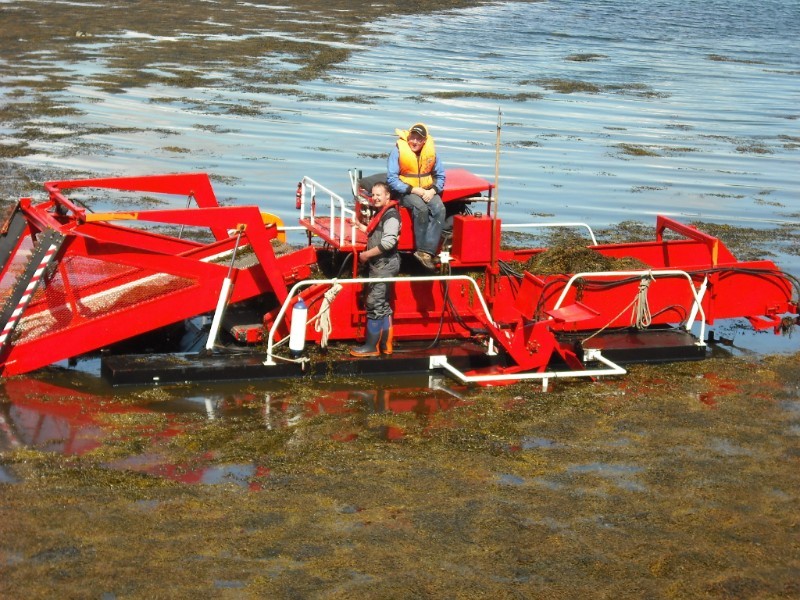
FM: People talk about seaweed’s magical properties. Did you grow up hearing stories about it?
SH: Like most traditional remedies, there was always a reverence for the properties of the unknown, and we knew seaweed worked without caring about the science. However, in our case, the magic was also about the spring water. Ishga gets all (seriously all) the water that we need to produce the products from one family owned spring, which has been passed down for generations. In practical terms this means a highly nutrient and mineral rich water—that’s taken thousands of years to percolate through granite bedrock—that adds to the products. Historically, these were important for many reasons, not least the fresh drinking water, but also as a respect for your ancestors who had tended to them before. Even if we didn’t use this spring today, the family would still have to maintain it, keeping the grass around it trimmed, and any objects removed. Tradition has it that the fairies like the springs….

Does any folklore play into this at all? Aren’t there tales of mermaids and selkies there?
A lot of tales came from my late uncle, who was a fisherman, and thus I could never be confident of the veracity of the stories. Perhaps neither could he! One of my favourites is the Storm Kelpies, or Blue Men (‘Na fir ghorma’) of the Minch—the stretch of water between Harris and the mainland. Normally they live quietly just below the surface, but can speak to men on the boats and cause storms if they don’t like what they hear! Some think they are part of a mermaid origin story. Generally, it’s telling that although the islands have in modern history been very Presbyterian, they have strong lingering superstitions from even pre-Celtic days. Both my sister, who lives in Singapore, and I, living in America, still have quirks we can’t shake!
Are you a fan of Outlander?
I shamefully admit I’ve never read the books and have only seen a few episodes of the TV show. However, it’s a wonderful and original narrative, set in a period of such turmoil on all sides, which makes for great storytelling. I was impressed that they use a Gaelic that is closer to the mainland dialect that is so rare now, rather that the easier option of the island variety that most currently speak. Importantly, and like Harry Potter, it’s done a brilliant job of promoting Scotland internationally, and encouraging fans to visit our country.
What is Ishga’s connection to standing stones?
So the stones in our picture are called Callanish, right along the road from Ishga, and they are the inspiration for the ones in Outlander. They’re older than Stonehenge and free to the public to visit and walk around. After the Reformation, they were lucky to escape destruction from locals who still told stories of their association with pagan times, but now locals are proud to have such a unique heritage site on their island. Whatever your spirituality, you can’t help but be moved when you’re around them.
Any other magical tale you can share with us?
I’m very lucky to visit home so often for work and pleasure. In June I was in Skye with my wife and kids and I shared two very relevant experiences. First, we visited Dunvegan Castle, the seat of Clan MacLeod (they still live there, up the stairs from the public rooms!). There, you can see the Fairy Flag, a mythical object that the clan believes still protects them—their Ark of the Covenant if you will. They say it goes back to the Crusades. It works too—apparently, they used it put out a fire in the 1950’s that was threatening to burn the whole castle. Secondly, we went to the Fairy Pools. These are a long series of cascading waterfalls and pools that drop from the Cuillin Mountains. The water is so clear and aqua that they say they could only have been created by the fairies.
